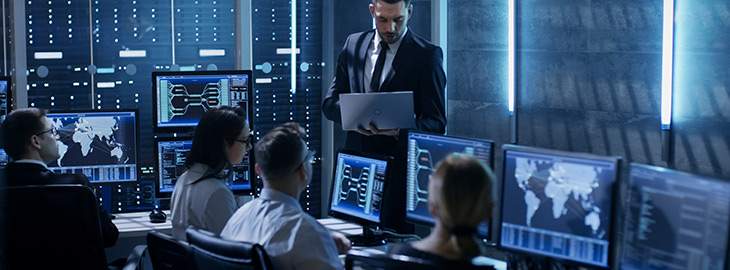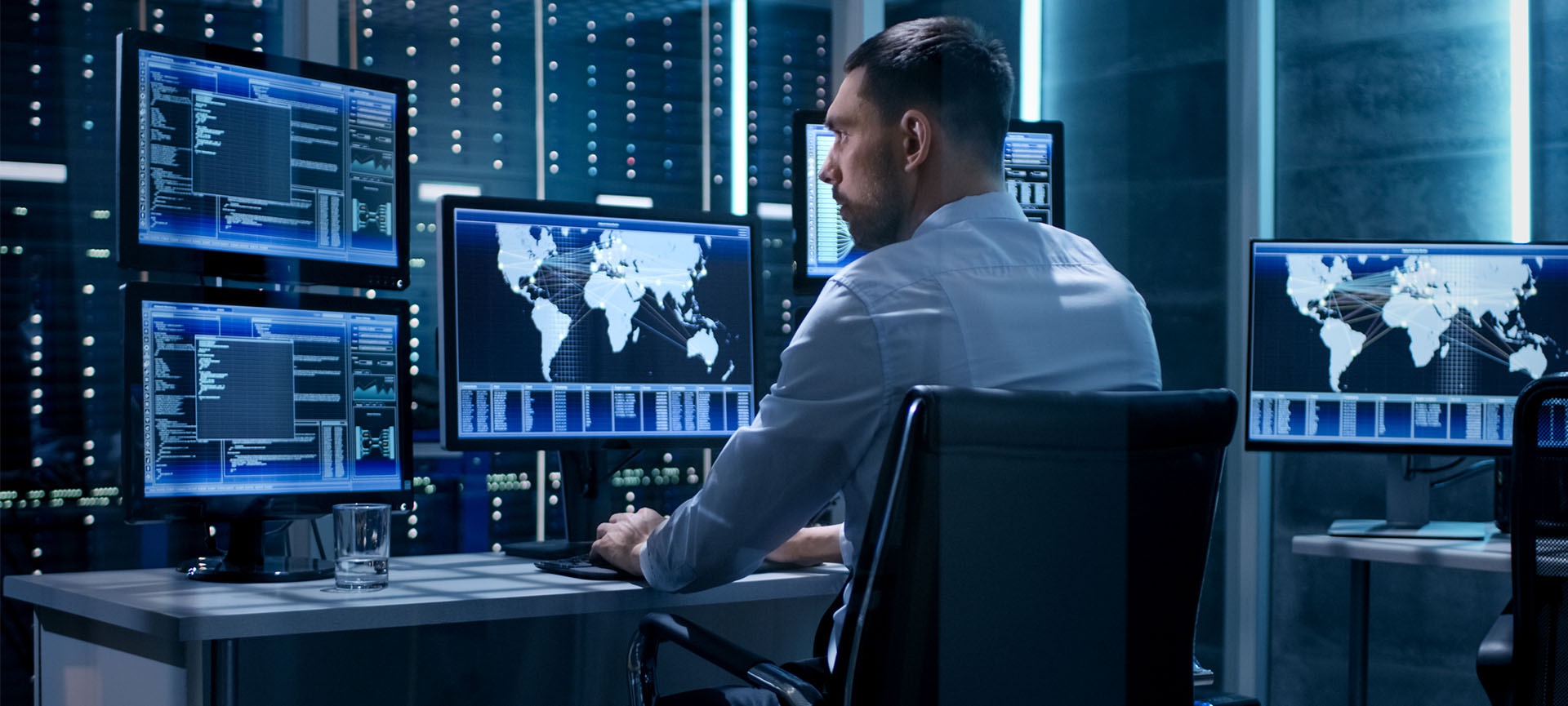Encouraging Your Company with Ironclad Corporate Security Actions
Encouraging Your Company with Ironclad Corporate Security Actions
Blog Article
From Cybersecurity to Physical Steps: Reinforcing Corporate Safety in a Transforming Globe
In today's quickly progressing electronic landscape, the significance of corporate protection can not be overemphasized. As cyber risks become significantly innovative and prevalent, companies must exceed conventional cybersecurity measures to protect their operations and assets - corporate security. This is where the combination of physical safety and security steps becomes essential. By incorporating the strengths of both cybersecurity and physical safety and security, firms can develop a thorough defense strategy that deals with the diverse series of risks they encounter. In this discussion, we will certainly check out the transforming risk landscape, the need to integrate cybersecurity and physical safety, the application of multi-factor authentication actions, the importance of worker understanding and training, and the adjustment of protection actions for remote labor forces. By taking a look at these key locations, we will certainly acquire important understandings into how organizations can strengthen their corporate safety and security in an ever-changing world.
Recognizing the Changing Danger Landscape
The progressing nature of the contemporary globe necessitates a comprehensive understanding of the transforming threat landscape for reliable corporate safety. It is vital for organizations to stay educated and adapt their safety and security gauges to deal with these developing dangers.
One key aspect of comprehending the changing threat landscape is recognizing the various sorts of threats that organizations face. Cybercriminals are regularly creating brand-new strategies to manipulate susceptabilities in computer systems and networks. These risks can vary from malware and ransomware assaults to phishing scams and social engineering methods. Additionally, physical hazards such as burglary, criminal damage, and corporate reconnaissance stay prevalent worries for businesses.
Surveillance and examining the threat landscape is vital in order to identify prospective risks and vulnerabilities. This involves remaining updated on the latest cybersecurity trends, assessing hazard knowledge reports, and conducting normal threat assessments. By comprehending the altering hazard landscape, companies can proactively carry out ideal safety steps to minimize threats and safeguard their possessions, online reputation, and stakeholders.
Integrating Cybersecurity and Physical Safety
Incorporating cybersecurity and physical safety and security is vital for thorough business security in today's electronic and interconnected landscape. As organizations progressively rely upon modern technology and interconnected systems, the limits between physical and cyber threats are becoming blurred. To efficiently safeguard versus these risks, an alternative approach that combines both cybersecurity and physical safety steps is important.
Cybersecurity concentrates on shielding electronic assets, such as systems, networks, and data, from unapproved accessibility, disruption, and burglary. Physical security, on the various other hand, includes procedures to safeguard physical possessions, individuals, and facilities from vulnerabilities and threats. By integrating these 2 domain names, companies can address susceptabilities and threats from both physical and digital angles, therefore boosting their total security stance.
The combination of these two disciplines enables a much more thorough understanding of safety and security dangers and makes it possible for a unified response to incidents. As an example, physical gain access to controls can be boosted by incorporating them with cybersecurity procedures, such as two-factor authentication or biometric recognition. Likewise, cybersecurity measures can be enhanced by physical security procedures, such as surveillance electronic cameras, alarm systems, and safe and secure access points.

Implementing Multi-Factor Authentication Measures
As organizations progressively focus on thorough safety procedures, one effective strategy is the application of multi-factor authentication measures. Multi-factor verification (MFA) is a protection technique that needs individuals to provide several forms of identification to access a system or application. This approach includes an added layer of security by combining something the user knows, such as a password, with something they have, like a fingerprint or a safety and security token.
By applying MFA, companies can considerably enhance their protection pose - corporate security. Traditional password-based authentication has its limitations, as passwords can be easily compromised or neglected. MFA reduces these dangers by adding an extra authentication factor, making it a lot more hard for unauthorized individuals to gain accessibility to delicate info
There are numerous kinds of multi-factor authentication approaches available, including biometric authentication, SMS-based confirmation codes, and hardware symbols. Organizations require to evaluate their particular requirements and select one of the most suitable MFA solution for their requirements.
Nevertheless, the implementation of MFA should be carefully intended and executed. It is essential to strike a balance in between safety and usability to prevent user frustration and resistance. Organizations ought to also consider possible compatibility issues and offer adequate training and assistance to ensure a smooth change.
Enhancing Employee Recognition and Training
To strengthen company safety and security, organizations have to prioritize improving worker awareness and training. Lots of safety violations happen due to human mistake or absence of my website understanding.
Efficient staff member recognition and training programs must cover a vast array of subjects, including information protection, phishing attacks, social engineering, password hygiene, and physical safety actions. These programs should be customized to the certain needs and duties of different worker functions within the organization. Normal training simulations, workshops, and sessions can assist staff members create the needed skills and expertise to respond and recognize to safety hazards effectively.
Additionally, companies need to motivate a culture of protection awareness and supply continuous updates and pointers to maintain staff members notified about the most recent hazards and mitigation methods. This can be done via internal interaction channels, such as e-newsletters, intranet websites, and e-mail projects. By promoting a security-conscious workforce, organizations can substantially reduce the chance of protection incidents and protect their useful properties from unapproved access or concession.

Adapting Protection Steps for Remote Labor Force
Adjusting company security procedures to accommodate a remote labor force is necessary in making sure the security of sensitive information and possessions (corporate security). With the boosting pattern of remote job, companies must execute appropriate security procedures to alleviate the dangers related to this new method of working
One important element of adapting safety measures for remote original site job is developing safe communication channels. Encrypted messaging platforms and online exclusive networks (VPNs) can help protect sensitive info and avoid unauthorized gain access to. In addition, organizations need to impose using solid passwords and multi-factor verification to enhance the safety and security of remote access.
Another vital consideration is the execution of secure remote access services. This entails giving employees with safe and secure accessibility to business resources and information through virtual desktop computer facilities (VDI), remote desktop methods (RDP), or cloud-based options. These innovations ensure that sensitive information remains secured while making it possible for staff members to execute their roles properly.

Last but not least, extensive protection understanding training is critical for remote employees. Educating sessions should cover finest practices for safely accessing and handling delicate details, recognizing and reporting phishing attempts, and maintaining the total cybersecurity hygiene.
Conclusion
In verdict, as the threat landscape proceeds to evolve, it is vital for organizations to strengthen their security gauges both in the cyber and physical domains. Integrating cybersecurity and physical security, implementing multi-factor verification procedures, and boosting staff member recognition and training are necessary steps towards attaining durable corporate protection.
In this discussion, we will certainly explore the changing risk landscape, the need to integrate cybersecurity and physical protection, the execution of multi-factor verification procedures, the significance of worker recognition and training, and the adjustment of safety and security actions for remote labor forces. Cybersecurity actions can be enhanced by physical security procedures, such as monitoring electronic cameras, alarm systems, and secure accessibility points.
As companies significantly focus on extensive protection actions, one efficient strategy is the execution of multi-factor verification actions.In final thought, as the risk landscape continues to develop, it is vital for companies to enhance their protection determines both in the cyber and physical domains. Integrating cybersecurity and physical safety, executing multi-factor authentication actions, and improving employee understanding and training are important steps towards achieving durable business security.
Report this page